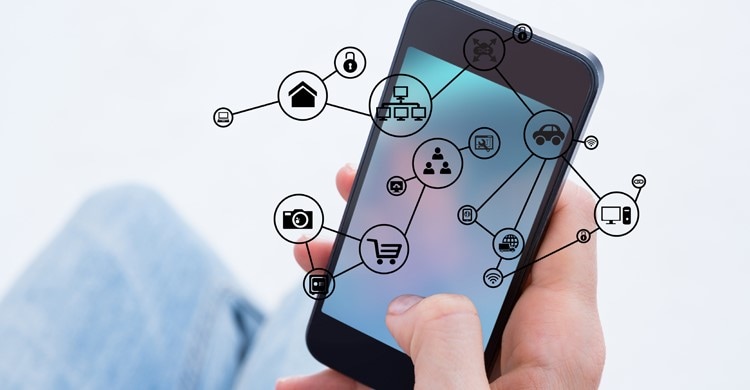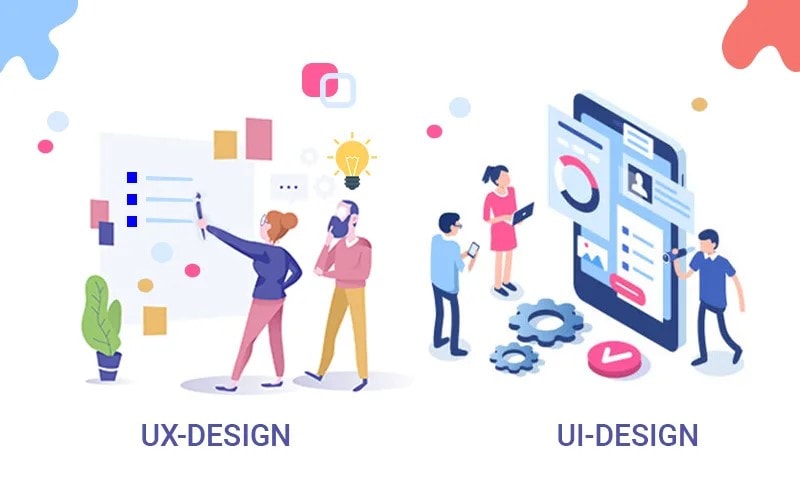Interface Design in UX Discipline

In recent years a widespread growth has been seen in interface design, increasing creativity, technology, and innovation. The number of users on digital platforms is increasing, leading to rising demand for simple and friendly applications.
From creating an interface that is easy to use and friendly to users to one that can be easily controlled and interacted with, the user interface design has a broad scope of application. The complete process of designing the visual, metaphorical, functional aspects of a product or system is included in the interface design.
Research states that implementing a well-defined user interface design can raise the website's conversion rate by 200% and better UX design by 400%. In brief, design acts as the interactions between humans and the computer system, acting as the bridge for smooth communication.
In simpler terms, interface design UX acts as the moderators to turn the potential visitors to buyers for the websites and make them stay connected and loyal in the long run.
What is Interface Design? - A Brief Introduction.
The user interface design uses technology to build the interface in the software, application, or computerized devices that act as the point of interaction between the user and the system. It involves all those features that allow the users to interact with the system and use it most effectively and efficiently.
A successful user interface is one that is intuitive, efficient, simple, and user-friendly. There are various app interface design and web interface design in the current technological environment that aims to improve the overall conversion rate to attract more customers. One can effectively do the same by managing the user interface design.
The most common formats that are used as the access points for user interface design are:
- Graphical user interfaces (GUIs): The use of visual representations for the control like one in the desktops and laptops comes under this category. It involves the use of input devices like a keyboard and mouse.
- Voice-controlled interfaces (VUIs): The app interface design works on the voice commands as Siri or Alexa falls under this category. These are now more common in applications and websites and allow the users to interact while multi-tasking like driving or cooking.
- Gesture-based interfaces: When the user and the systems interact based on the movements or use the 2D engage spaces, the system is based on the gesture. Virtual reality games like Pokemon Go are one of the finest examples of gesture-based interface design.
- Form-based user interface: While using the website or applications, a user interface design is needed to acquire the information through forms. This offers limited space or a drop-down menu to enter the data like the ones used in surveys or feedback forms.
- Menu-driven user interface: The best example of the menu-based user interface design is the ATMs. The ATM menu allows the user to navigate through a series of questions or inputs to reach the service that he intends to receive.
- Touch user interface: The most common user interface design in operation in the current technological era is touch-based. From mobiles, tablets, to even laptops, the touch-based interface's use is increasing at a great pace.
With multiple types of user interface design, there are various elements that one needs to consider to build one of the finest interactive platforms. The most common elements to consider are:
- The input controls like buttons, toggles, checkboxes, and various others.
- The navigation control options like a breadcrumb, sliders, search fields, icons, and others.
- The basic information components include progress bars, message boxes, and pop-up windows.
- The call to action elements
- The containers that hold the content together like accordions.
An Example of Everyday Interface Design.
With the advancement in technology and acceptance of new applications, there is an increase in the use of interface design as well. From the websites to the mobile applications, every single online platform uses the user interface design to offer a smooth and surreal experience to the users.
The statistic offered by Statista suggests that 35% of people worldwide use the smartphone for the majority of purposes. In contrast, DMR suggests that an average of 80 applications are installed in mobile devices at a time. This suggests the use and applicability of the interface design in everyday applications.
From gaming applications to shopping websites, every other online platform uses one or another kind of user interface design. The app interface design like Amazon, Flipkart, or Zomato offers the users a unique touchpoint experience to toggle between different options with ease and no complications.
While there is a wide range of web interface design, users can access the information in the most surreal manner. Sites like Medium, Practo, and Dropbox allow the users to access the information, learn the features, and amazing functionality, helping the users connect most quickly.
Common Uses for Interface Design.
Before we move on to the most common interface design uses in the tech world, it is important to understand the factors to consider to make the best interface design. The main factors are:
- The user design should be friendly that allows a higher degree of usability and likeability.
- The design should be simple, straightforward, and enjoyable, and not frustrating.
- The user interface design should focus on communicating the brand value to the customer to reinforce trust and loyalty.
- The visual design should be ornamental and strategically thought through the content, design, logo, and aspects.
- Using informative technology by labeling, structuring, and organizing the web content is one of the key components for app interface design and web interface design.
It is quite clear that user interface design is important in a wide variety of applications. The most common uses of the interface design are listed down below:
- The learning-based applications are based on the user interface that allows the customers to interact with the system to learn and acquire knowledge.
- Retail shopping platforms like Amazon, Myntra, and various other portals use the user interface to offer customers options, make choices, and initiate the purchase decision.
- The virtual reality gaming platforms use the interface design to communicate with the customers and offer them a smooth and memorable gaming experience.
- For the website to grow and offer the services that the customer expects, it is important to seek feedback. The user interface design allows collecting the feedback and customer's opinion most efficiently.
- The responsive interface design is used for designing the applications like the one used to maintain worklists, sleep cycles, and similar natured applications that offer flexibility and better usability.
The relationships between Interface Design and UX.
For any application or website to succeed, it must offer a better and higher degree of UX. The user interface and user experience are interlinked and are equally important while designing any online platform. One can explain the relationship between the user interface design and interface design UX with the help of the below points:
- UI focuses on the quality of interaction, while UX focuses on better functionality.
- UI involves the more artistic and intuitive components in nature, while the UX offers the components that focus on marketing and advertising aspects.
- UI aims to deliver the finished product or service, while the UX is aimed towards the overall project management.
To design a better relationship between Interface Design and UX, it is important to keep the application simple and straightforward. Keeping the interface discoverable and properly aligned reduces the customer's time, and improves the response system is key to developing a better user interface design.

>
Conclusion
In a nutshell, user interface design is one of the key aspects to incorporate while designing any application or website. Focusing on the key aspects that ensure better communication between the customer and system, the user interface should focus on maintaining consistency and minimizing the complexity.
Implementing an interface design that is clear and straightforward to offer a seamless experience to the user.

